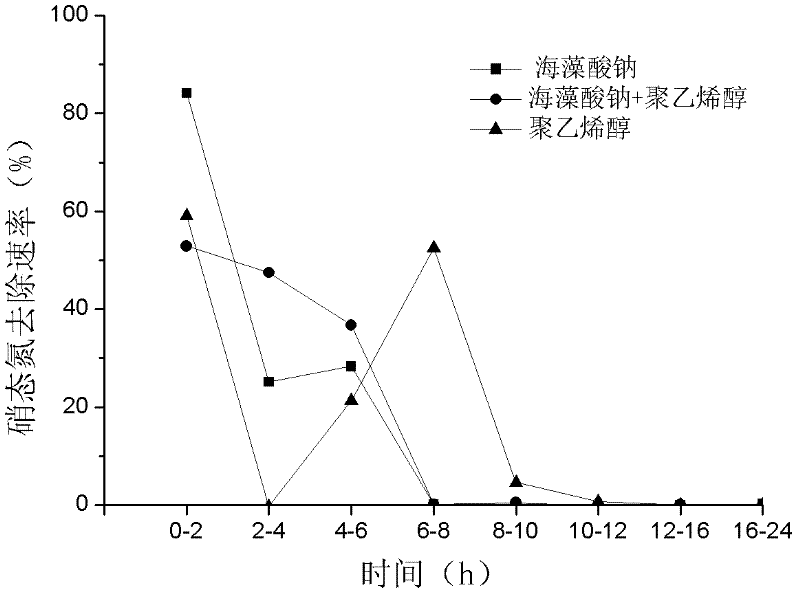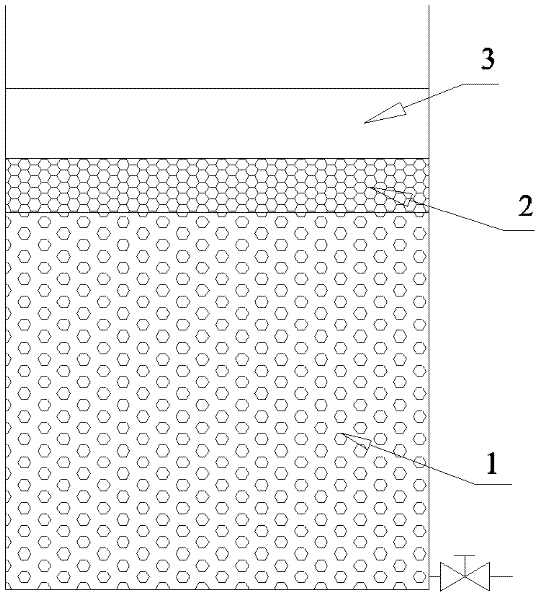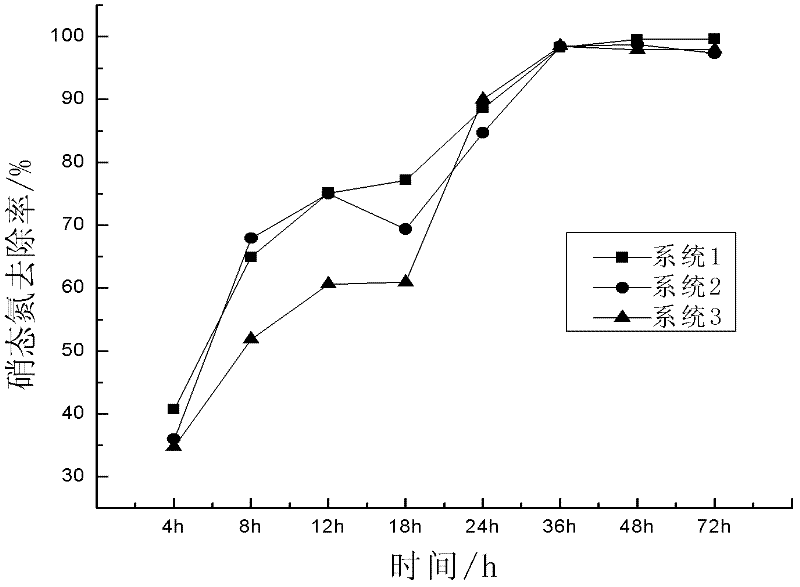Preparation method and application of immobilized bacteria for improving denitrification efficiency of constructed wetland
A technology of artificial wetland and denitrification efficiency, applied in chemical instruments and methods, fixed on/in organic carriers, aerobic process treatment, etc., can solve the problem of reducing cell activity, short service life, poor mass transfer performance, etc. problem, to achieve good biocompatibility, long service life and good stability
- Summary
- Abstract
- Description
- Claims
- Application Information
AI Technical Summary
Problems solved by technology
Method used
Image
Examples
Embodiment 1
[0032] A method for preparing immobilized bacteria that improves nitrogen removal efficiency in constructed wetlands, the steps of which are:
[0033] 1) Screen the aerobic denitrifying strains from the aerobic composite vertical flow constructed wetland, and carry out screening and cultivation of the strains in an incubator with a constant temperature of 28°C;
[0034] The medium composition is: agar 20g, potassium nitrate 1g, potassium dihydrogen phosphate 1g, ferrous chloride hexahydrate 0.5g, calcium chloride heptahydrate 0.2g, magnesium sulfate heptahydrate 1g, sodium succinate 8.5g, bromine 1 mL of daphneol blue reagent; 1000 mL of distilled water, with 1 mol·L -1 Sodium hydroxide adjusted the pH to 7.0-7.3.
[0035] 2) Preparation of the bacterial suspension of aerobic denitrifying bacteria:
[0036] Select the aerobic denitrifying bacteria preserved on the slopes of 1-2 rings, add them to 750mL enrichment medium that has been sterilized by high temperature and pressu...
Embodiment 2
[0047] The same amount of three kinds of immobilized beads prepared in the preparation steps 1-5 in Example 1 were respectively placed in 0.01mol·L -1 , 0.1mol L -1 , 1mol L -1 HCl and NaOH, 1mol L -1 NaCl, CaCl 2 、KH 2 PO 4 Soak in the solution for 24 hours, and observe the changes in the integrity and strength of the immobilized pellets. The results are shown in Table 1, the sodium alginate-polyvinyl alcohol immobilized beads have better stability in acid-base salt solution.
[0048] Table 1 Stability of three kinds of carrier-embedded immobilized beads in acid, alkali and salt solution
[0049]
[0050] Note: no change (0); slightly softer, slightly foamy, poorer elasticity (+); softer, foamy, poorer elasticity (++); foaming, loose structure, brittle (+++)
[0051] Other steps are the same as in Example 1.
Embodiment 3
[0053] An application of an immobilized bacterium improving the denitrification efficiency of a constructed wetland in a constructed wetland, the steps of which are:
[0054] The sodium alginate-polyvinyl alcohol immobilized pellets prepared in the preparation steps 1-5 in Example 1 were applied to the denitrification research in the simulated column of the constructed wetland. The concentration of nitrate nitrogen wastewater for denitrification treatment is 80mg / L, COD Cr About 400mg / L. The filling height is about 2.5cm, and the device such as figure 2 As shown, among them, the lower layers of A and B systems are filled with 2-3 mm round ceramsite, and the upper layers are respectively immobilized pellets and ceramsite soaked by bacterial suspension. , the same specifications of ceramsite, respectively, 4h, 8h, 12h, 18h, 24h, 36h, 48h, 72h water samples were taken to analyze the nitrification rate and nitrite nitrogen residue, the results are as follows image 3 , 4 show...
PUM
| Property | Measurement | Unit |
|---|---|---|
| Diameter | aaaaa | aaaaa |
Abstract
Description
Claims
Application Information
 Login to View More
Login to View More - R&D
- Intellectual Property
- Life Sciences
- Materials
- Tech Scout
- Unparalleled Data Quality
- Higher Quality Content
- 60% Fewer Hallucinations
Browse by: Latest US Patents, China's latest patents, Technical Efficacy Thesaurus, Application Domain, Technology Topic, Popular Technical Reports.
© 2025 PatSnap. All rights reserved.Legal|Privacy policy|Modern Slavery Act Transparency Statement|Sitemap|About US| Contact US: help@patsnap.com



